Frohnradstraße 2
63768 Hösbach
Tel.+49 (0) 6021 62998-100
Fax +49 (0) 6021 62998-99
Plaster
They are the quick rescue for minor burns, cuts or scratches: plasters. The rapid wound dressings are available for cutting to size or in the form of strips, circles or with wings. They are part of the standard material in every first-aid kit and are intended to protect the injury from external influences. Plasters keep the wound dry and free of dirt and germs.
Filter products
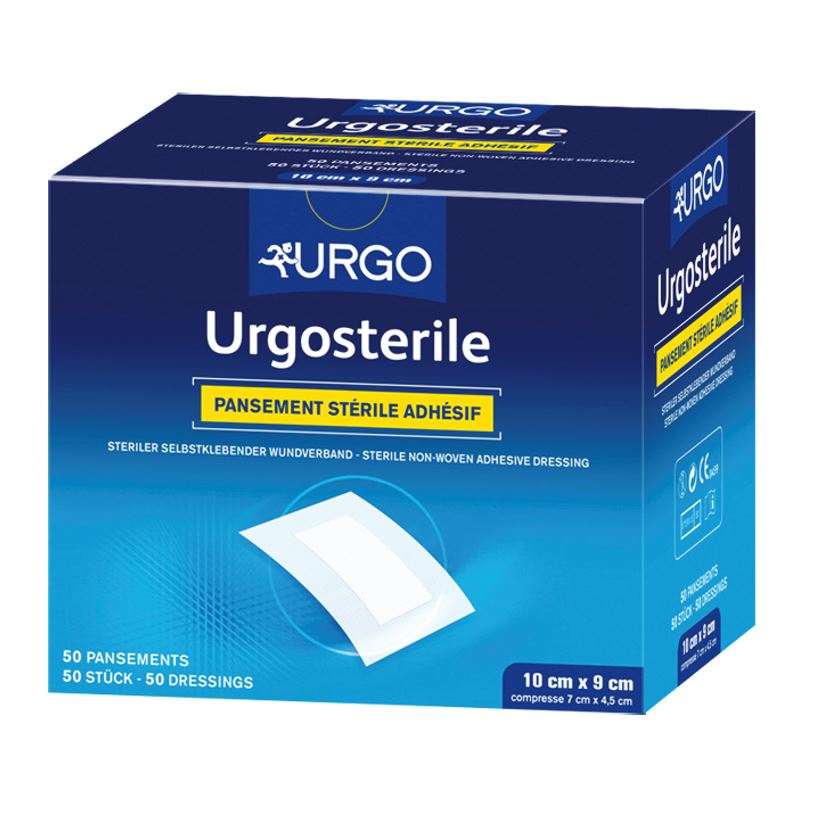
Sterile wound dressing - in peel bag Carrier material: white polyester fleece Adhesive: polyacrylate adhesive Wound pad: made of polyester and viscose with a protective fleece made of polyethylene Fields of application: For covering postoperative, sutured and traumatic wounds Other properties: transversely stretchable, breathable, cuddly, sterile, high skin compatibility, all-round adhesive, can be gently removed without leaving adhesive residue, special protective fleece prevents Bond to the wound, sterilized with ethylene oxide Application: For single use only Product details Content: 50 pieces
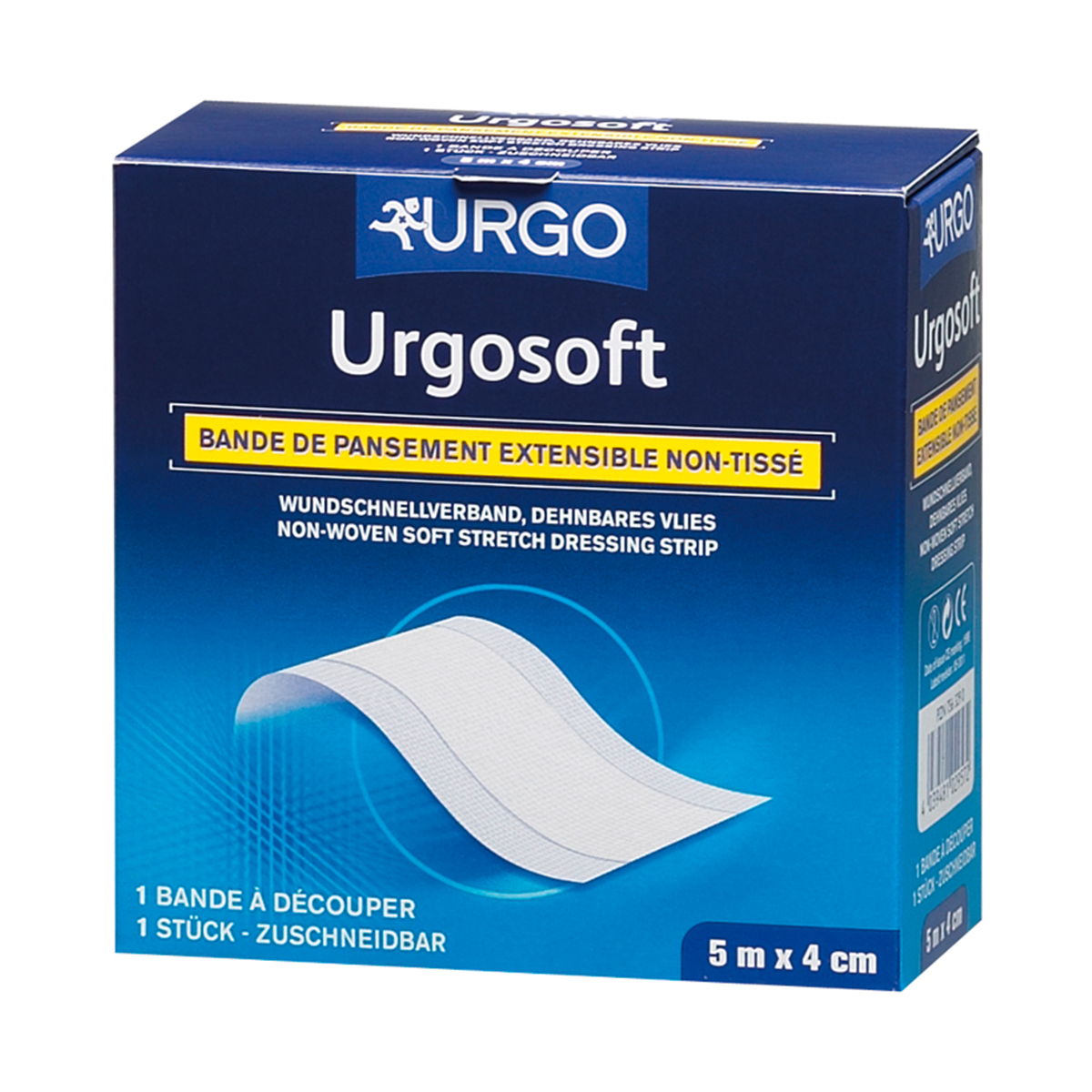
Rapid wound dressing for sensitive skin Carrier material: skin-coloured fleece Adhesive: Acrylic emulsion Wound pad: made of viscose with a protective fleece made of polyethylene Fields of application: For covering minor injuries of sensitive skin Other properties: can be cut to size, stretchable, cuddly, high skin compatibility, breathable, good oxygen supply to the skin due to the wavy applied adhesive, good Adhesive strength, can be gently removed without leaving adhesive residue Application: For single use only
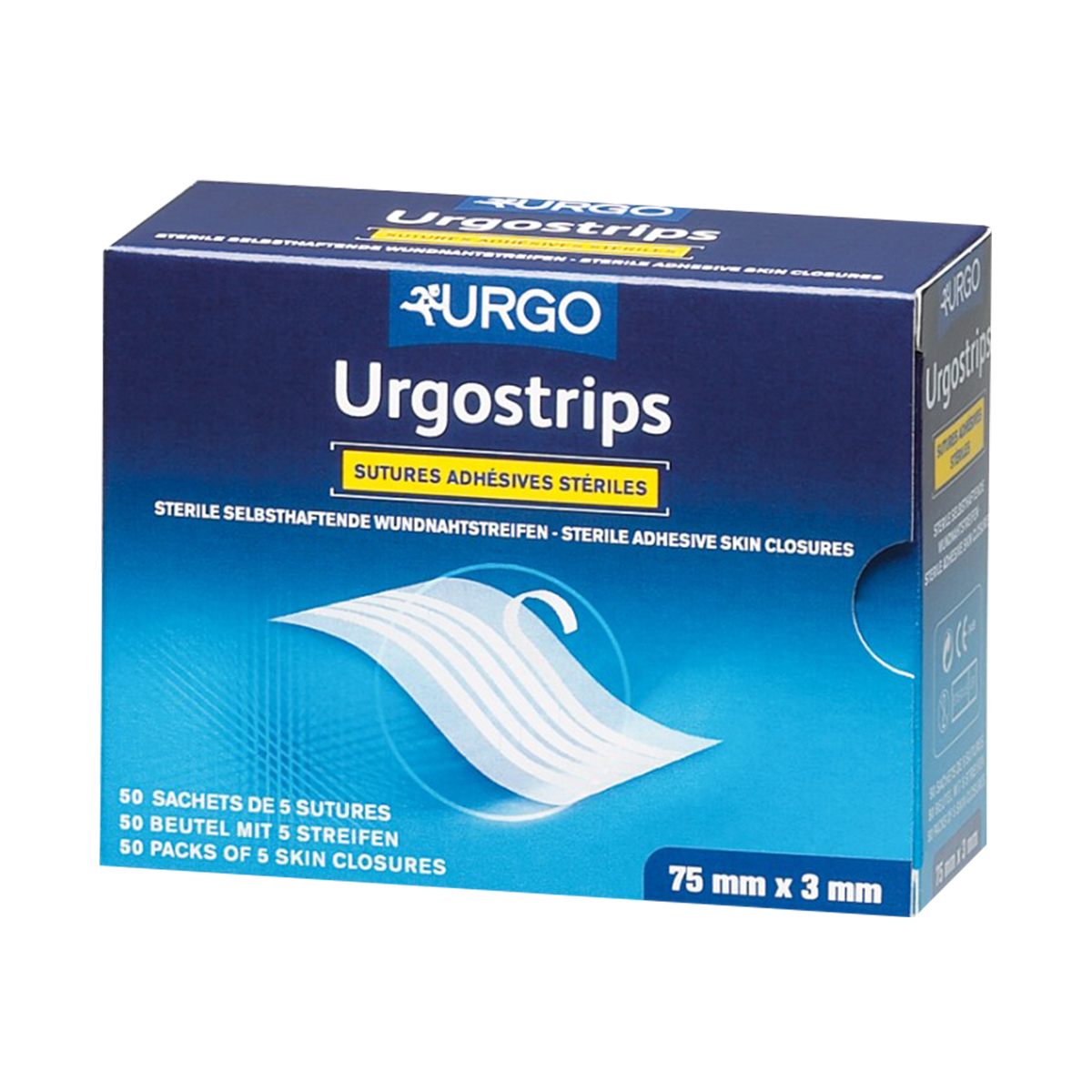
Urgostrips® are sterile wound suture strips. The carrier material consists of white polyester fleece. The strips are attached to the skin with an acrylic adhesive. Fields of application: Postoperative wounds Superficial wounds Further features: sterile applied to silicone protection paper with high tensile strength good adhesion high skin tolerance in a peel bag sterilized with ethylene oxide Application: For single use only. To avoid possible additional infection, it is recommended to cover the wound with an antiseptic plaster. Contraindications: Do not use for inflamed or haemorrhagic wounds. Do not use on the eyes. Do not attach to joints. Different sizes: 75 mm x 3 mm (50 bags of 5 strips each) 75 mm x 6 mm (50 bags of 3 strips each) 100 mm x 6 mm (50 bags of 10 strips each) 100 mm x 12.5 mm (50 bags of 6 strips each)
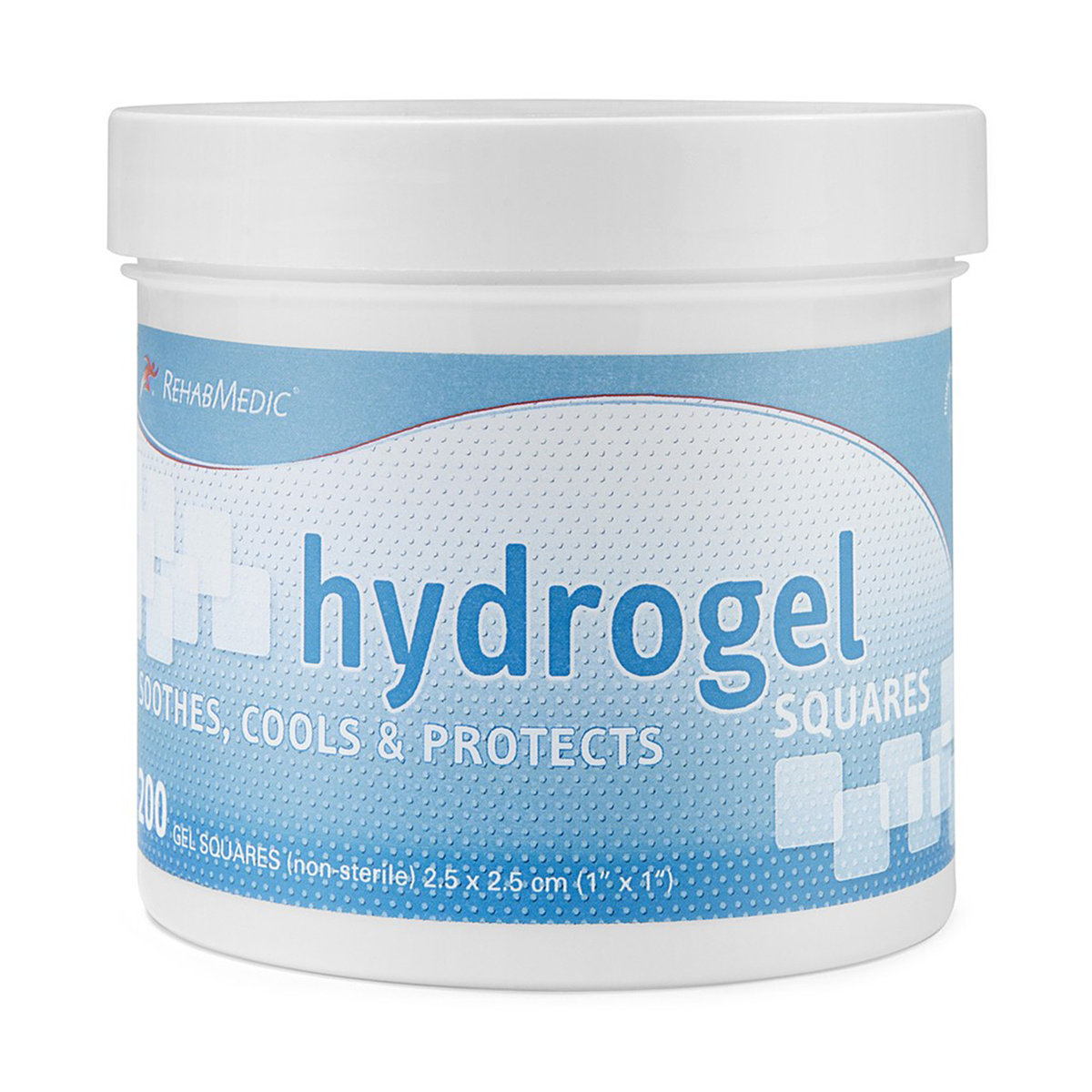
Rehab Medic's gel pads in the form of circles or rectangles help to protect the skin against pressure, friction and blistering. Details: -Components: at least 80% purified water and 4% polyethylene oxide.
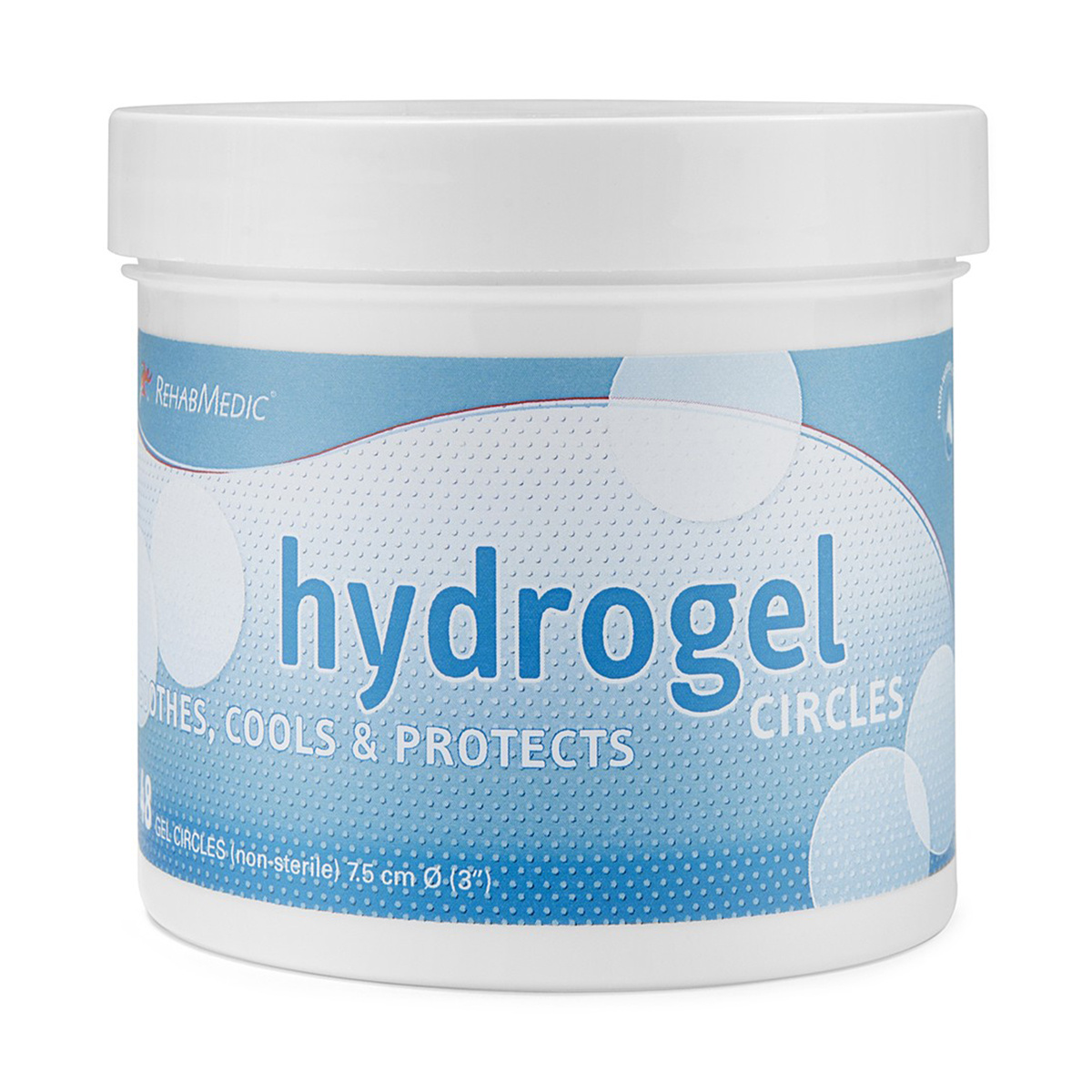
Rehab Medic's gel pads in the form of circles or rectangles help to protect the skin against pressure, friction and blistering. Details: -Components: at least 80% purified water and 4% polyethylene oxide.
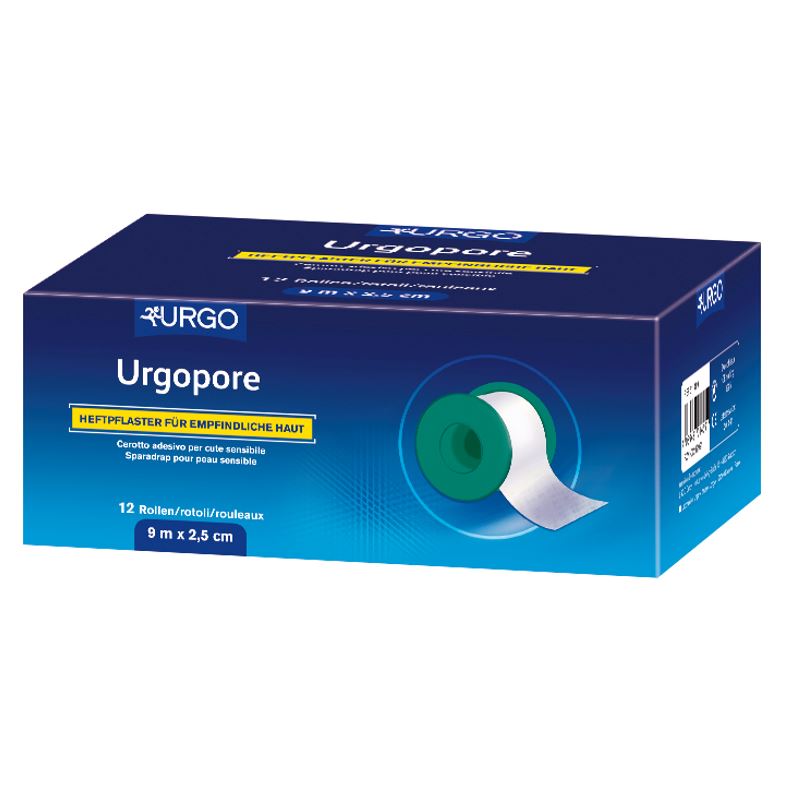
Urgo® Urgopore Urgopore is a white non-woven plaster for securing wound dressings and bandages. Its microporous fabric ensures that the underlying skin can breathe. The special adhesive is hypoallergenic, making it suitable for use on sensitive and damaged skin. Important note: Urgopore must not be applied directly on injured or damaged skin, on moist skin and on mucous membranes. Application: For optimal adhesion, the skin should be cleaned, disinfected and then rinsed and dried. The fixation patch should be changed daily. Product details: Contents: 12 rolls Dimensions per roll: 5 m x 2,5 cm Color: white Hypoallergenic adhesive Side Effects: Like any plaster, this product may cause skin reactions such as irritation or dermatitis. To reduce the risk of infection or skin reactions: Follow directions for use carefully. Do not reuse used patch. Do not apply to eyes or mucous membranes. Do not use after the expiration date. Do not use the product if it is damaged. Important Instructions: Keep out of reach of children. Do not apply the patch directly to damaged skin or to mucous membrane or moist skin. Do not sterilize. The simultaneous presence of fatty products or hair may impair the adhesive force and cause detachment of the attached medical device (wound pad, catheter,...). When applying to the elbow, apply the fixation patch in the direction of the folds of the elbow. Prolonged application on moist material and application in the area of joints or in areas under tension may compromise the adhesive strength and delay wound healing (infection due to lack of adhesion of the attached medical device, multiple dressing changes, etc....). The attachment of the medical device must have been explained or demonstrated by a healthcare professional.
The plaster ABC: Everything you need to know about plasters
When are plasters used?
Plasters are used to quickly close wounds. They are mainly used for minor injuries and are intended to help stop light bleeding. They are ideal for scratches, cuts, abrasions, and minor burns. Plasters are not suitable for large wounds or internal injuries. For wounds that cover a large area, bleed a lot, or are very deep, you're better off using bandages such as bandages and compresses.
Quick wound dressing
A quick wound dressing is a plaster consisting of a wound pad attached to an adhesive tape. The wound dressing is usually made of a sterile polyester fleece. Quick wound dressings are available for cutting to size or already pre-cut in various forms. These include plaster strips, fingertip plasters or large, rectangular wound dressings. Quick wound dressings are used primarily for minor injuries such as scratches, cuts and abrasions that no longer require special treatment.
Hydrocolloid plasters
Hydrocolloid plasters contain a hydrogel that is designed to cool and keep the wound moist. You can use them to soothe burns, blisters, calluses, herpes blisters or pimples. The gel absorbs the wound secretion and directs it to the outside. At the same time, it maintains a moist environment that promotes healing. The gel patch also acts as a protective cushion over the wound.
Waterproof plasters
Waterproof plasters prevent the penetration of liquids from the outside due to their upper material. This not only protects the wound, but also allows the surrounding skin to come into contact with water. Thus, you can shower without any problems. Waterproof plasters usually have a shorter adhesion period than normal plasters, as they are less stretchy and adapt to movements.
Blister plasters
Blister plasters are hydrocolloid plasters that are already cut to the appropriate shape, for application to the foot or hand. The blister plaster is applied to the affected area and used for targeted pain relief and protection from external influences. The plasters are usually round. However, the hydrogel plasters are also available in an oval or rectangular shape for better grip on the heel. Blister plasters can be used to treat both open and closed blisters.
Plasters for sensitive skin
If you are looking for a plaster for sensitive skin, you should look for the addition of "Soft" "Skin" or "Sensitive" in the item description. This is a clear indication that the plasters are particularly skin-friendly. A prerequisite for a sensitive patch is that it can be easily removed from the skin without leaving any adhesive residue and without causing any skin irritation.
How do I apply a plaster correctly?
1. Clean the skin around the wound if possible
2. Disinfect the wound with a desinfectant
3. Depending on the type of injury, a wound and healing ointment can be applied. Read the package insert beforehand to see if the ointment is suitable for the injury in question.
4. If necessary, cut the quick bandage to the appropriate length, preferably not too tightly
5. Apply the plaster in the center of the injury.
How do plasters help wounds to heal?
Plasters are designed to protect the affected area from external influences such as dirt, germs or moisture. They lie like a second skin under clothing and prevent the wound from drying on the clothing and tearing open again. In this way, infection can be prevented, and the wound can heal better. But that's not all: just a few minutes after you have sustained an injury, the body begins to produce wound secretions. This secretion is responsible for the care of the wound, but also contains waste products such as bacteria and dead cell parts. Without a plaster, the surface of the wound dries and crusts over. But there may still be moist wound secretion underneath, which slows down the wound healing process. This is because germs and bacteria can no longer be transported to the surface, out of the wound. With the application and regular replacement of the plaster, the top layer of secretion is removed each time, and the wound can heal better.
When should I change the plaster?
When or how often a plaster should be changed depends entirely on the condition of the wound. If, for example, dirt or liquid gets to the plaster through external influences and penetrates it, we advise you to change the plaster, otherwise bacteria can get to the wound. This is especially important if the wound is not yet completely closed. Even if the wound still releases a lot of secretions and weeps, a new plaster should be applied regularly. However, a plaster should not be changed too often either, otherwise the wound healing process will be disturbed too frequently. In any case, the plaster should remain on the wound until it is completely closed.
